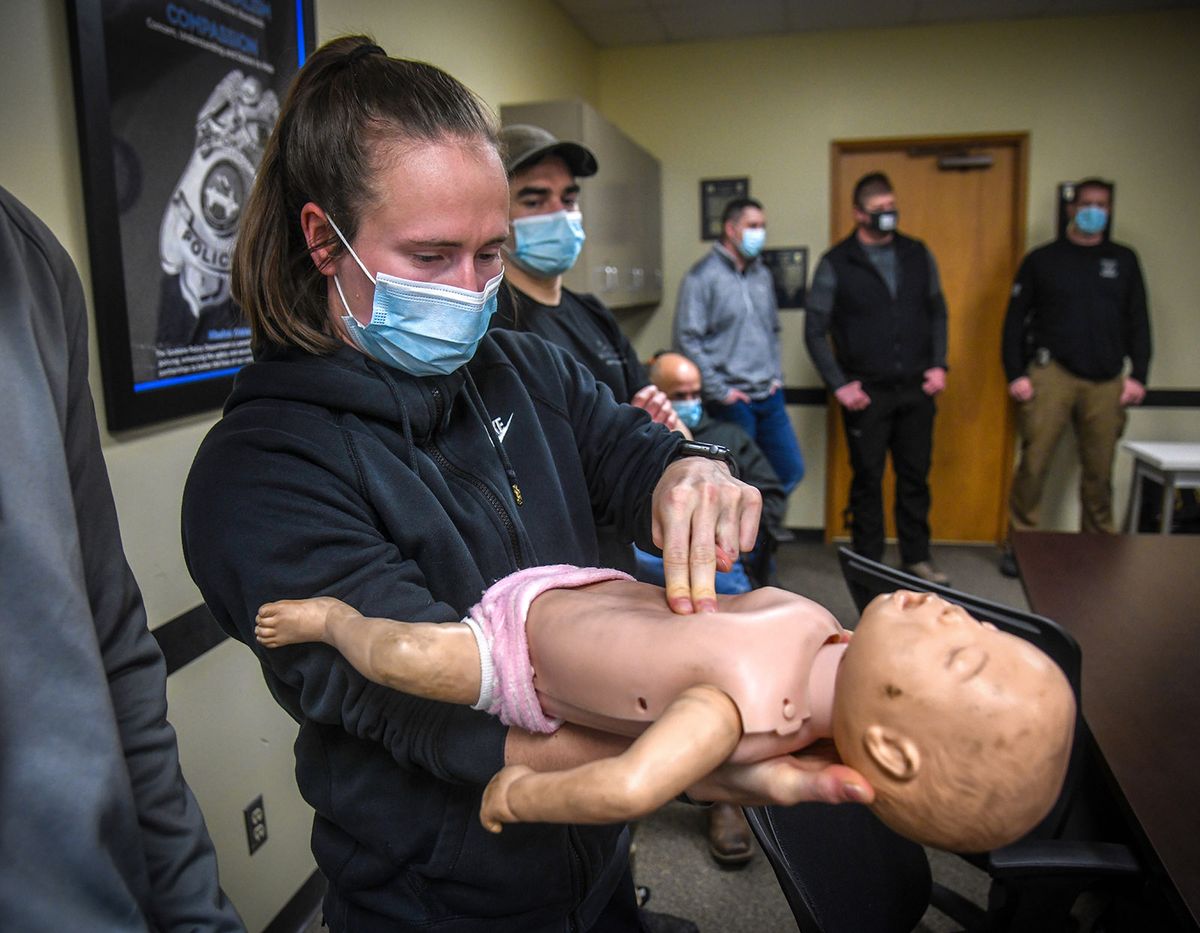Spokane Police officers train to provide critical first aid as they increasingly arrive before medical personnel

When Sgt. Jay Kernkamp became a medic more than a decade ago, the first-aid training Spokane Police Department officers received was minimal, which at the time was in line with how often officers needed to provide aid.
Now, patrol officers use their first-aid skills on a daily basis, Kernkamp said.
“So often, law enforcement is the first on scene, and prior to early 2000s law enforcement would go and just stand there,” Kernkamp said. “Time and time again, we were waiting valuable time on life-saving measures that do make a difference in someone’s life.”
Kernkamp, along with Officer Paul Buckman, became medics together in 2008 when openings on the SWAT Team came up. Just three years later, the department began using Tactical Combat Casualty Care training adapted from battlefield technology used in the Gulf Wars, Kernkamp said.
The training taught officers how to use tourniquets, chest seals and other life-saving measures when someone experiences a trauma such as a stab or gunshot wound.

“We’ve always been very progressive in our training, but in 2012 is when we made a huge paradigm shift to the entire department and buying first-aid supplies for every officer,” Kernkamp said.
Last week, officers completed a required in-service training to refresh them on skills such as CPR and administering Narcan for drug overdoses. First aid is emphasized at one in-service training each year, and then touched on at the other couple of in-service trainings throughout the year. Patrol officers will commonly apply tourniquets or chest seals to gunshot wound victims, Kernkamp said.
“This was openly embraced by all department members, because I think they’ve all had that helpless feeling of standing over someone on a crime scene with life-threatening injuries and not being able to do something,” Kernkamp said. “It made a huge impact on the community.”
Officers are increasingly the first to arrive on scene before medical personnel. Once the area is secure, they perform first aid, not only saving lives but often reducing the severity of the injuries by limiting blood loss.
“The officers are eager to use this stuff. They have the equipment, they have the training now, and they can easily apply it,” Buckman said. “It’s not advanced skills, but it has a huge impact on the patient’s outcome.”
All officers have a first-aid kit and all patrol cars also have kits. There are about 30 automated external defibrillators in the department that are distributed throughout shifts, Kernkamp said.
“Our department truly cares about the community,” Kernkamp said. “Whether you’re a good guy, bad guy, whatever it is, we will take measures to save your life.”